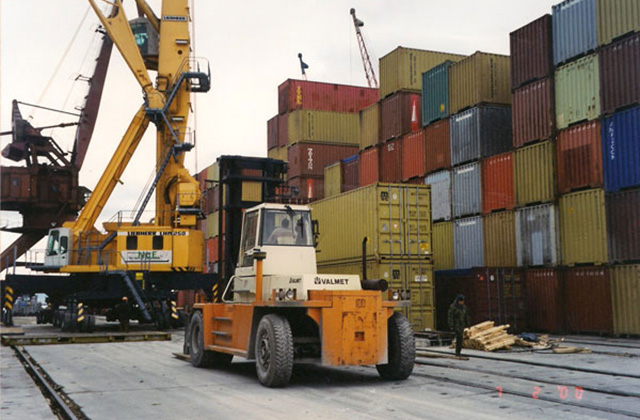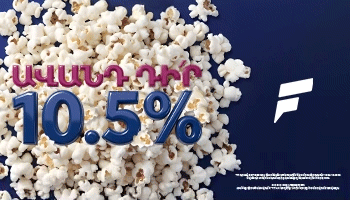
Economic year 2016: On most significant indices

By the end of the year media outlets usually review the year and make the top list of country’s prominent developments. In terms of economic developments, last year was rather rich: adoption of the Tax Code, Government change and etc. What will these changes bring? How will country’s economy make benefits from that if promised reforms are implemented? We can touch upon these points a year later.
Currently we may only cast a retrospective glance and sum up the economic year through actual indices (upon official statistics). It should be stated that it isn’t yet possible to state on what snapshot we have for 2016, as December hasn’t been summed up yet. In case of some indices we don’t have data for November either (they are not complete).
We may make a year-end review from February only, as soon as crucial macroeconomic indices are published. Instead, we’ll sum up the freshest indices. On December 20 RA National Statistical Service issued initial macroeconomic indices for January-November 2016. According to that publication Armenia’s Economic Activity Index (EAI) comprised 100.6 for January-November 2016 compared with the same period of the previous year.
Thus, economic activity for 11 months has grown by 0.6%. Of course, this isn’t the index anticipated in the beginning of the year, however, there is a bright point here: EAI was weak in January-October—0.4%. Making anticipations isn’t a thankful job (especially under absence of some data), however, it may be supposed that as of 2016 EAI will vary between 0.5-1%.
Regarding GDP real growth (or, as it’s said, economic growth), here data are more outdated. The official statistics has issued GDP calculations every quarter since 2011, and the freshest data refer to the third quarter. In the period of the third quarter 2016 GDP recorded real decline by 2.6% (compared with the same quarter of 2015).
Judging from declining indices of October, it isn’t excluded that the fourth quarter will also be with a negative sign. GDP real growth for 2016 was anticipated 2.1%, however, obviously we won’t have such an index. Price indices are from those issued most operatively. For 12 months (November 2016 compared with the same period of the previous year) consumption prices have decreased by 0.4%. On the one hand, this is good (from the consumers’ perspective), drop in price edifies of not such a healthy condition of economy.
Average monthly salary in November 2016 comprised AMD 181375, which is higher by 0.7% compared with the same period of the previous year. However, in public and private sectors salaries have changed differently: in private sector it recorded 2% growth, thus, comprising AMD 213267, and in public sector it has decreased by 2%, comprising AMD 155934.
From the economy fields the highest temp in January-November was recorded by services—7.8%. Volume of industrial production has grown by 6.8% (not touching upon growth quality).
It’s been 8th year in a row, that construction is recording a decline. Construction volume recorded 10.9% decline compared with the same period of the first 11 months of the previous year.
Agriculture ends up the year with a decline as well. The production in January-November comprised AMD 836.1, which is lower by 6.1% from previous year’s index.
Foreign trade data are also fresh. Export from Armenia in January-November 2016 has grown by 21.2% and comprised USD 1 billion 621.7 million. Export growth has mainly been provided through brandy and tomatoes. Import has grown by 2%, thus, comprising USD 2 billion 954.6 million.
In the beginning of the previous year compared with 31 December 2015, Armenia’s internal debt has increased by AMD 1600.4 billion or 43.5% compared with 11 months of 2016. It should be stated, that in the same period external debt has grown by AMD 70.1 billion or 3.3%.
State debt continued growing throughout last year. As of November Armenia’s state debt comprised AMD 2 trillion 686.8 billion or USD 5 billion 596.3 million.
It has increased by USD 518.6 compared with the beginning of the previous year. Moreover, while everybody’s attention is attached to the external debt, main “guilty” for the burden is the internal debt. In the period of 11 months of 2016 internal debt grew by AMD 160.4 billion or 43.5%. This isn’t surprising as there were issues linked to collection of state budget, and pursuant anticipations state budget will collect taxes less by about AMD 60 billion. And that gap is filled through a debt.
Money transfers from abroad continue decreasing throughout 2016. The freshest data issued by the Central Bank of Armenia (CBA) refer to January-October.
Thus, in January-October 2016 USD 1 billion 336.1 million has been transferred to Armenia through physical persons’ banking system.
Inflow of transfers has reduced by USD 138.4 or 10.4% compared with January-October of the previous year. If the decline temp was maintained in November-December, as of data for 2016, transfer inflow will comprise USD 1 billion 460 million, which is less than in the crisis year 2009. And money transfers from Armenia have grown by 7.2%, comprising USD 641.1.
The snapshot is more concerning regarding foreign investments. The freshest data here are provided for January-September 2016. According to RA National Statistical Service foreign investments in real sector of Armenia’s economy have decreased by 72% for January-September 2016 (by AMD 69.6) and comprised about AMD 30 billion. From which: net inflow of foreign direct investments decreased by 44.6% (by about AMD 35.8 billion) and reached AMD 44.4 billion.
Another crucial index is the poverty level, which will be issued later.
In November of the previous year poverty index 2015 was published. Upon official statistics poverty level in Armenia reduced by 0.2 pp compared with 2014, thus, comprising 29.8%. This means, that three out of ten Armenia’s inhabitants were lower than the line of high poverty line AMD 41698. We’ll familiarize with poverty level 2017 in October or November of ongoing year.
There are other indices as well, however, this is enough to have a view on previous year’s economic condition. And that snapshot, as we may see, is upsetting, even by numbers of official statistics.
Reasons have been covered throughout whole last year: drop in prices for oil, continuation of imposing sanctions against Russia, economy condition worsening and etc. More concerning is the point that 2017 won’t be an easy year either, as negative external factors impacting over Armenia’s economy won’t be eliminated.
By Babken Tunyan























